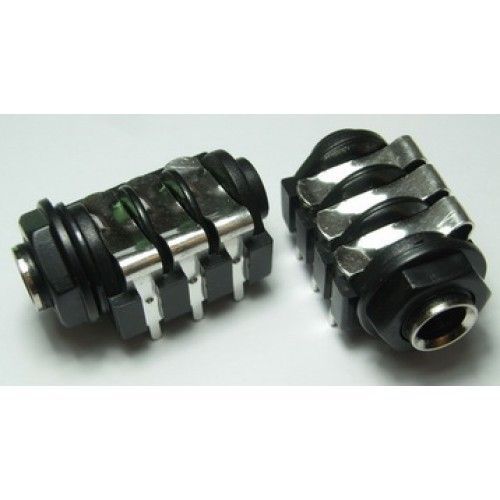Nice enclosure where did you find it ?
I see that you have a qu nexus too, the polyphonic aftertouch is a bliss with the axoloti.

Nice enclosure where did you find it ?
I see that you have a qu nexus too, the polyphonic aftertouch is a bliss with the axoloti.
Well spotted - the qu nexus is great for aftertouch and is very responsive once you get used to it. I also like the versatile midi to cv options ( and cv to midi). I bought the enclosure here.
It's a good fit for the axoloti with plenty of top panel space for controls.
I've just made an axoloti synth for a friend a decided to make a video about it. It's really long and not very informative, but I had great fun making the music to go with it, using only the axoloti synth I made in the video, and a unique patch.
I still want to do a video of me making the patch. If it goes well, I may start doing a few more videos of the patching side of things (and try to explain as much as my small brain lets me)
I always like your videos mtyas and look forward to more...
That patch also sounds great.
awesome video, really enjoyed watching it, and I did find it very informative - and you make it look easy 
one small thing, could you possibly do a quick sketch of the circuit diagram, in particular the jacks inputs, and how they connect to the pots/switches... I found that bit a little tricky to follow.
also I guess, when you had the pots wiring reversed, you could also have just dealt with this in software - no?... though I sup.ose that becomes a pain, if you design patches, that might be used on different control surfaces
again, thank you for making this video, I really appreciate the time and effort you put into it.
Mark
he uses switching jacks, basically they have six connectors, three on each side. if no jack is inserted the "columns" are connected to each other. if you insert a jack cable one side gets disconnected and the contacts from the jack make contact instead. so the wiring would be -> pot to one side of the jack, and from the corresponding connector on the other side to axoloti. if you insert a jack this will then be forwarded to the axoloti input instead. it is really obvious from the jack which side is which.
hope this helps:

Those are referred to as "Normalized" or "Switched" jacks. The term "normalized" means the connection is normally connected to something until a plug is inserted and the plug dis-connects the normal connection and replaces it. The other way to think of it is covered by the "Switched" phrasing where by inserting the plug "switches" the previous connection with the signal on the plug. These used to be VERY common in small audio gear's headphone jacks where plugging in the headphones would automatically dis-connect the built in speaker and route the signal to the headphone instead.
Just got my Axoloti the other day, was so happy to find it shipped with an enclosure, signed by Johannes Taelman himself!

No, not very busy with the axo at the moment. I couldn't get it working glitchfree on an new computer and gave up and went back to other hardware, Blofeld, Nord Modular.
We're taking preorders on our laser cut and deluxe cases for the Axoloti core:
The deluxe case has a nice textured finish and is a very professional looking case.
They are pricey, only because we're working in very small quantities. We're running this one crowdfunding pre-order style. If more people are interested, I can make these much cheaper.
The laser cut case is designed to be taken apart and put back together with ease.
Our store probably still has a couple of hiccups, so if you find anything or if you have any questions, please let us know. We're synth wizards, not shopping cart warlocks.
Just finished my second Axoloti-based instrument build. The keyboard runs off a Bare Conductive Touch Board and the (rather too bright) screen is a cheap 8-bit lo-res oscilloscope that I bought from Hong Kong.
There's a little battle scarring from my clumsiness and a few details need fixing but it works and looks quite pretty if I say so myself!
Nice. Was it difficult to get the oscilloscope display wired and working? Any pointers?
Thanks. The oscilloscope is an AVR DS150. Very cheap and cheerful but it'll run off the 5v power from the Axoloti. I connected the input on it to PA4 analog out and GND and it gets a decent enough signal to look cool.
When I'd tried it attached to audio out it wasn't really getting sufficient signal.
iotar, that's a great build! I hope you make a video or two with it in action!
Everyone else:
We've added an upgrade kit. If you have an Axoloti Core and want an enclosure, controller board, and all the hardware to build a Believotron Wanderlust. Includes fully assembled PCBAs with Knobs, Joysticks, and OLEDs.